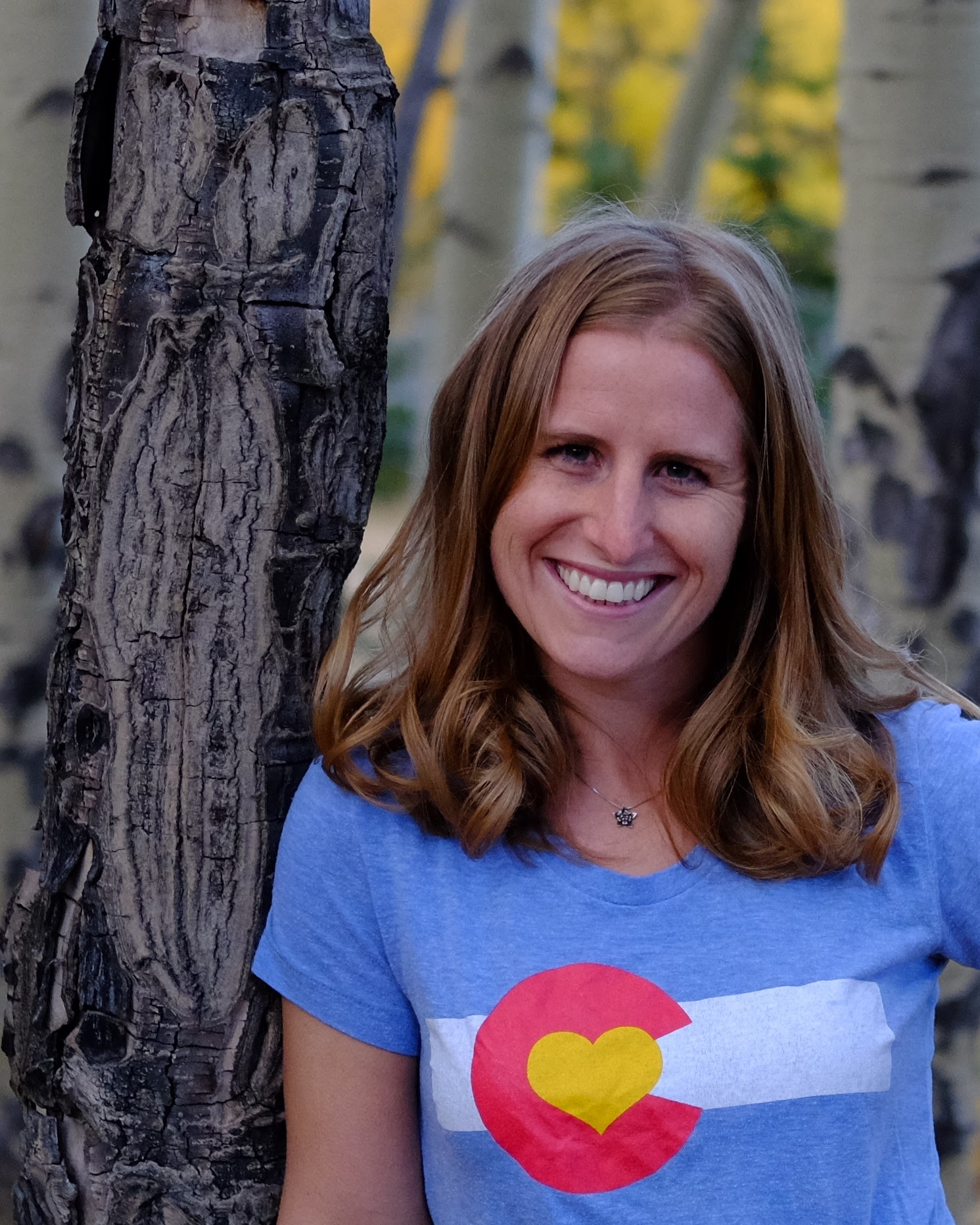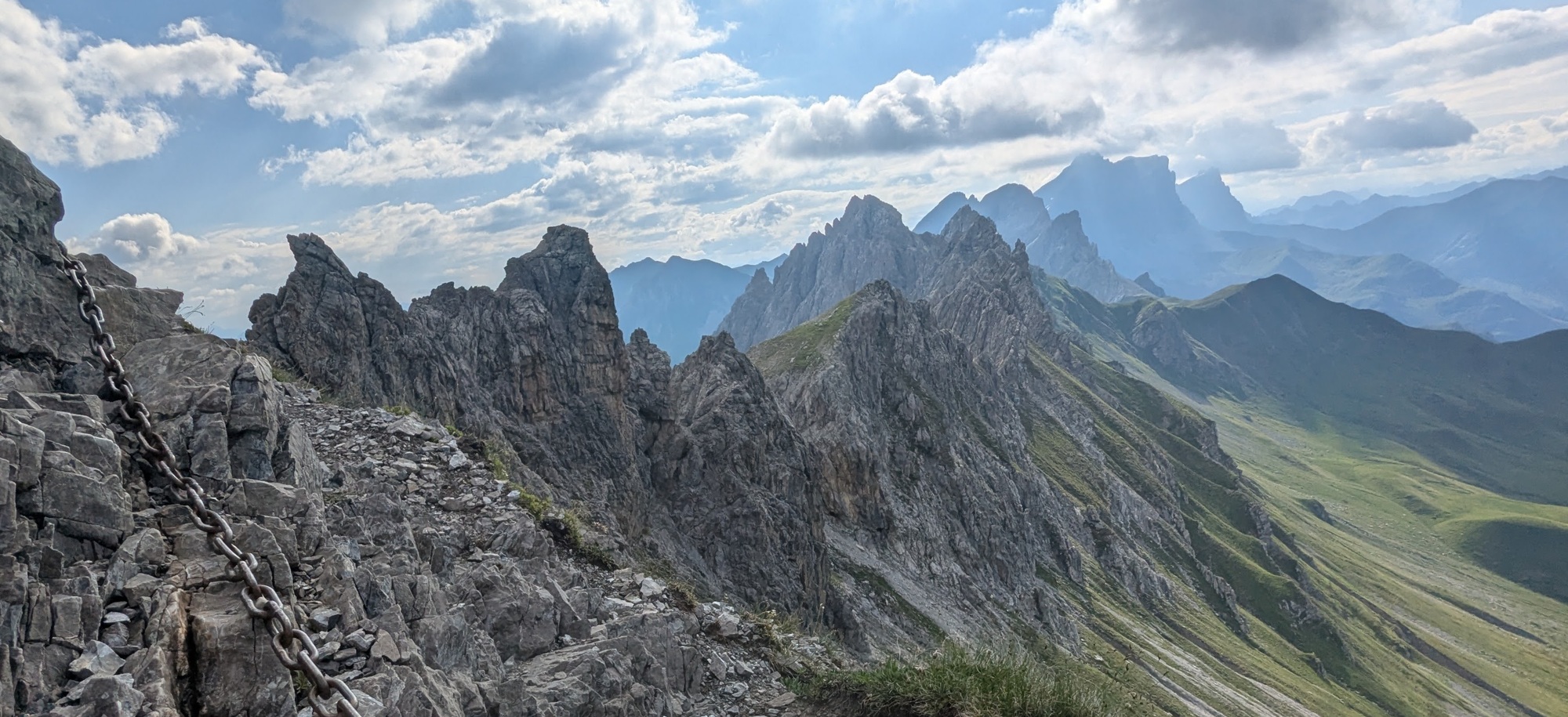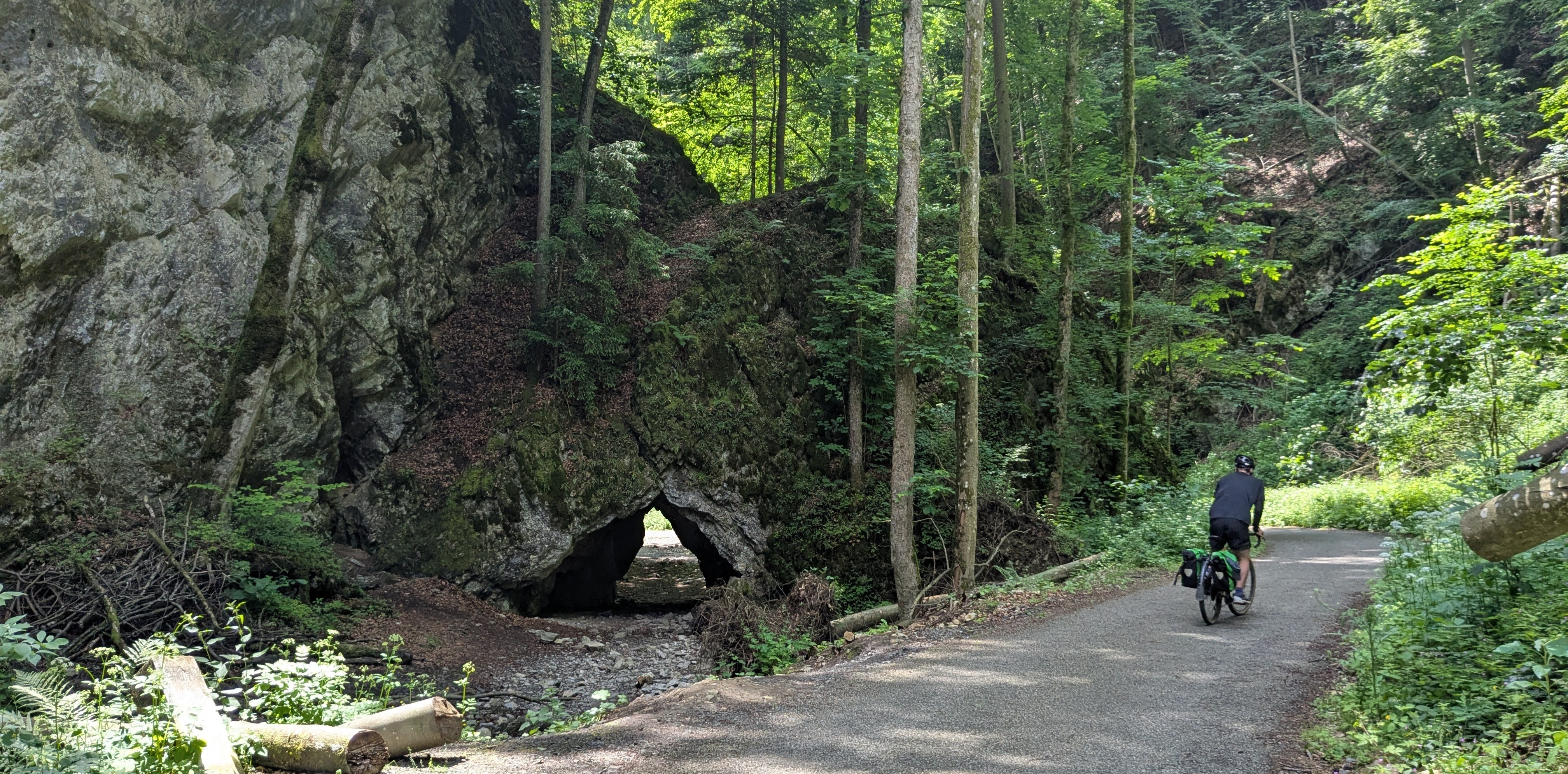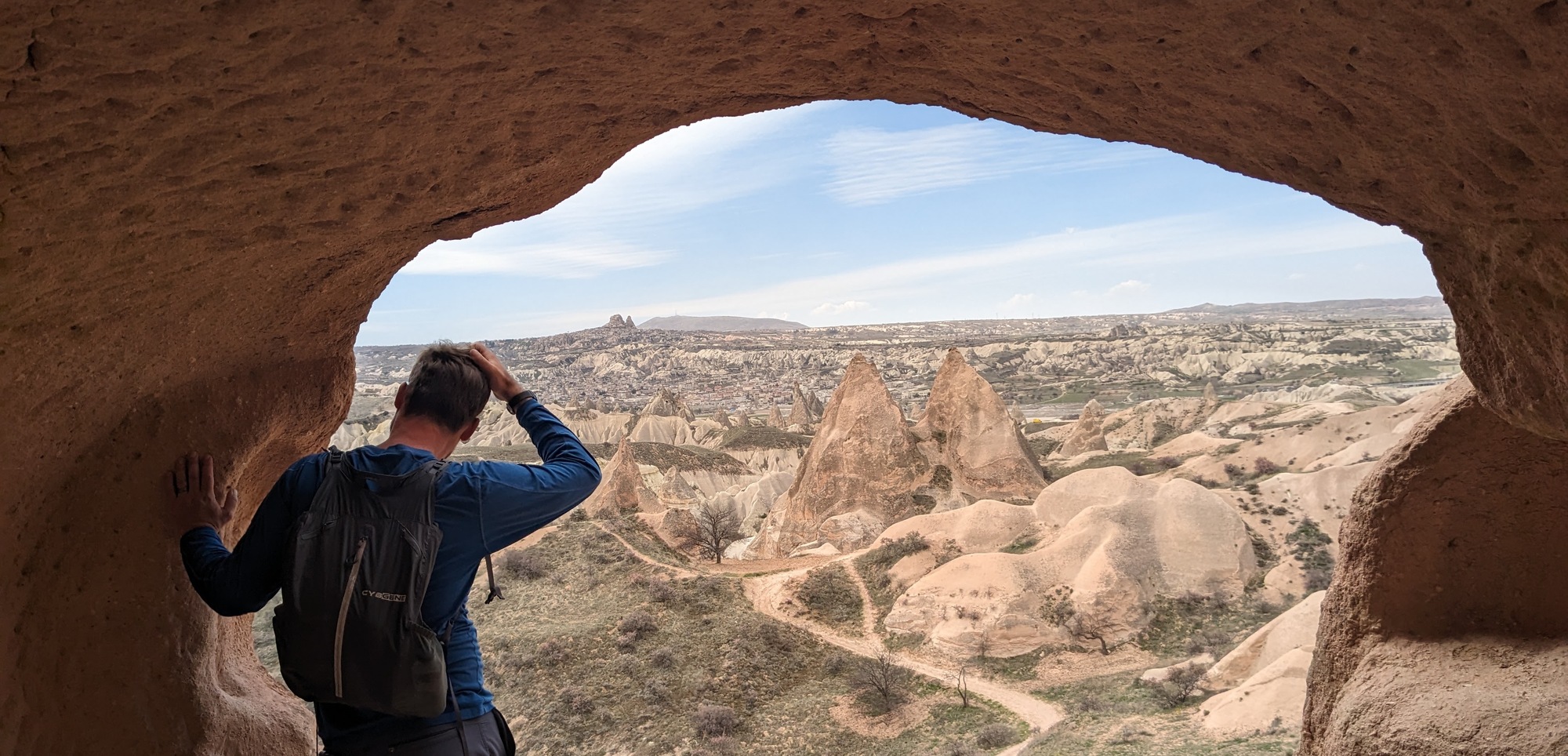
Türkiye Part II - Cappadocia and Istanbul
which was once Constantinople (keep reading to learn why they changed it)
Where have we been lately?
After one week in Cappadocia and two in Istanbul, our time in Trkiye has come to an end. Please enjoy our summary of this surprising countryor dont, and skip right to the picsyour call. Overall, we were completely surprised by how much we really enjoyed Turkey. The people all over stood out as incredibly kind, welcoming, and genuine. Also, the food, hiking, and history kept us very entertained. We are already talking about when we might be able to return!
Cappadocia
Cappadocia is a region of central Turkey known for its distinctive fairy chimneys (cone-shaped rock formations), cave dwelling homes, numerous rock-carved churches, and several underground cities. It is hard to describe this region of Turkey; we had a bit of a bitter/sweet romance with Cappadocia.
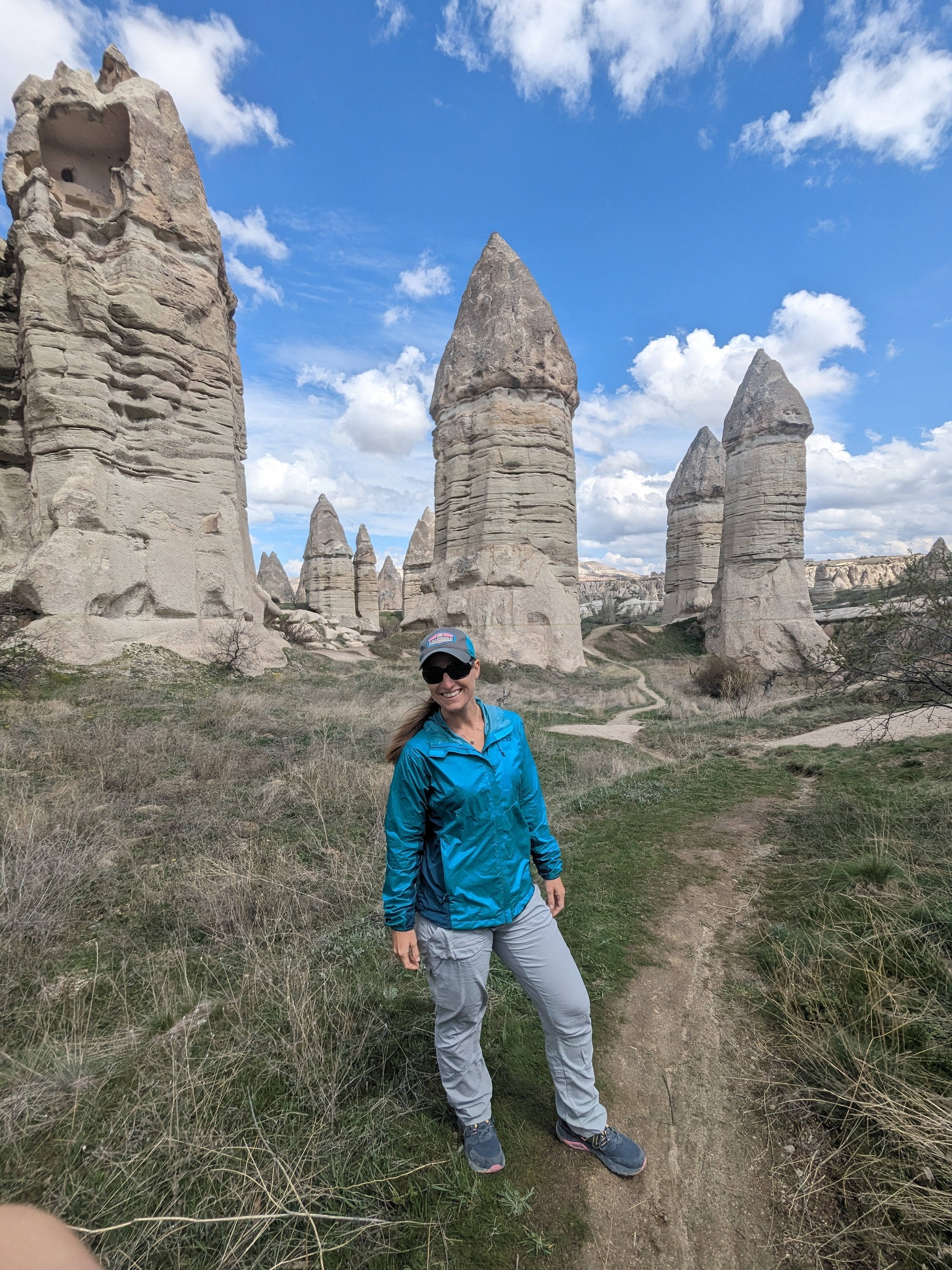
The pros of Cappadocia: We were in awe as we hiked through the valleys and canyons exploring the by-gone era of cave dwellings and imagined what it must have been like living in the rock-carved homes. It was truly other-worldly. While we have enjoyed hiking in many of our locations, we typically have to take a bus for about an hour to get to a hiking trail; while in Cappadocia we enjoyed numerous hikes straight from our hotel room. We also met some astoundingly kind Afghan refugees who worked in the hotel and were kind enough to share a bit of their culture and life experiences, which gave us a profound introduction to the struggles of life in Afghanistan (we were grateful for the education; as well as the joy and humor they brought to every conversation).
Our favorite activity was exploring the underground city of Kaymakli, a 300-meter deep city for local inhabitants for several centuries throughout the Arab-Byzantine wars. We could only explore the first 4 levels of this 13-level deep city. We had to crouch, squat, and duck as we made our way through the maze of tunnels exploring the different living spaces. Its estimated that, at its peak, the population of Kaymakli grew to around 3,500 people.
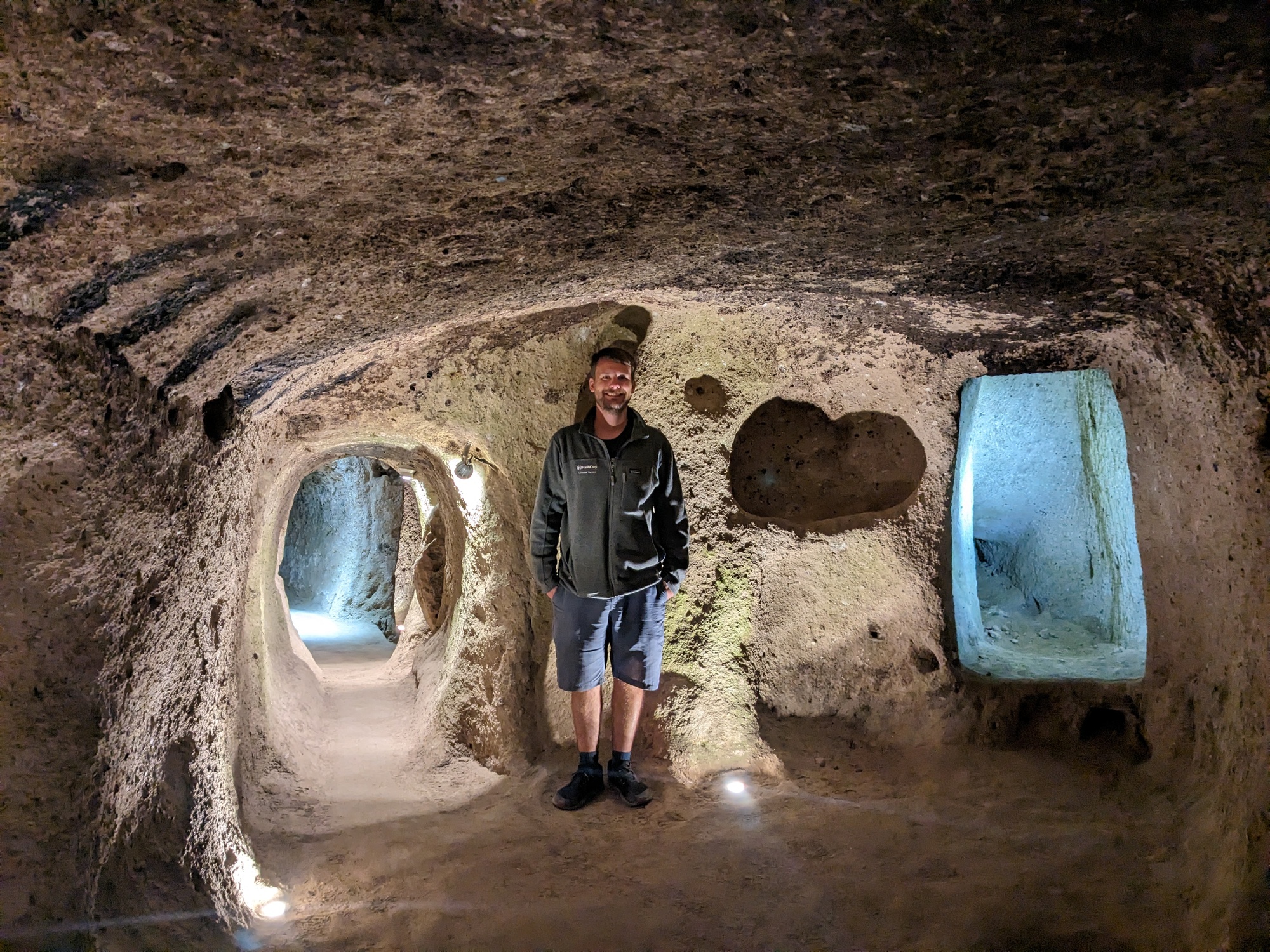
The cons of Cappadocia: Due to the stunning photogenic atmosphere of Cappadocia, the region has been turned into a bit of a tourist Instagram hotbed. Over the last decade, the locals have been pushed out and all that remains in the center town of Gerome are hotels, restaurants, tourist offices, and tchotchke shops; this results in a very Disneyland-esque environment that looked like a real town, but also felt disingenuous.
Istanbul
Istanbul felt quite similar to New York City, in that it is a HUGE city, a tourist mecca, and each neighborhood had a slightly different feel and charm. The historic center is home to stunning mosques, The Grand Bizarre, museums, and endless tourist shops. The only mosque we visited was the most popular, Hagia Sophia, which has a fascinating history. In short, Hagia Sophia was originally an Eastern Orthodox church built in the 3rd century. After the Ottomans conquered Constantinople in 1453, it was converted to a mosque. It is still an active mosque today and free to enter (outside of Muslim prayer times).
We thoroughly enjoyed strolling through the varying neighborhoods with a young Istanbul local Tyler met on Couchsurfing.com who offered to show us around his favorite charming streets and parks. He also invited us to his parents home for a traditional Turkish dinner (dinner table in pic below). Due to Ramadan (in which muslims fast from sun-up to sun-down), we could not begin eating until 7:45pm. The family was so kind and we greatly enjoyed learning more about their lives in Istanbul. This evening proved to be the highlight of our time in Istanbul.
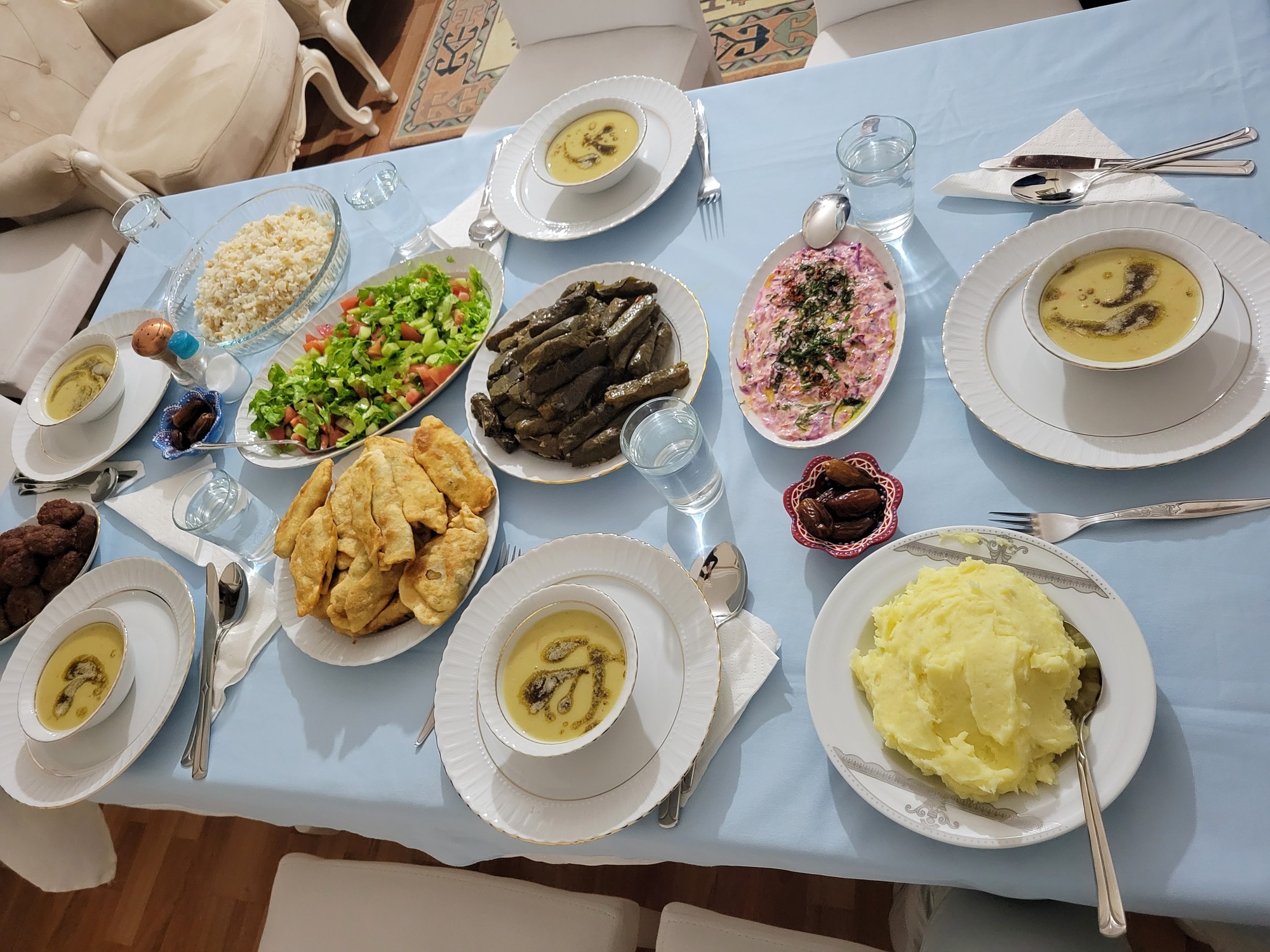
We were warned that Istanbul is an annoyingly loud city; however, we must have lucked out, because we found our neighborhood to be quiet, peaceful, and very charming (that, or after the cities of Mexico every city appears quiet). We were delighted to continue to experience the astounding Turkish hospitality in the big city, where local cheese and baklava shop proprietors invited us to sit down for tea when they realized we were American and spoke English.
We also enjoyed a ferry ride from one end of the Bosporus straight (Sea of Marmara) to the other (Black Sea). During which we were captivated by the incredibly large cargo-ships that passed through the straight. Tyler was very excited to spot a submarine making its way along the straight.
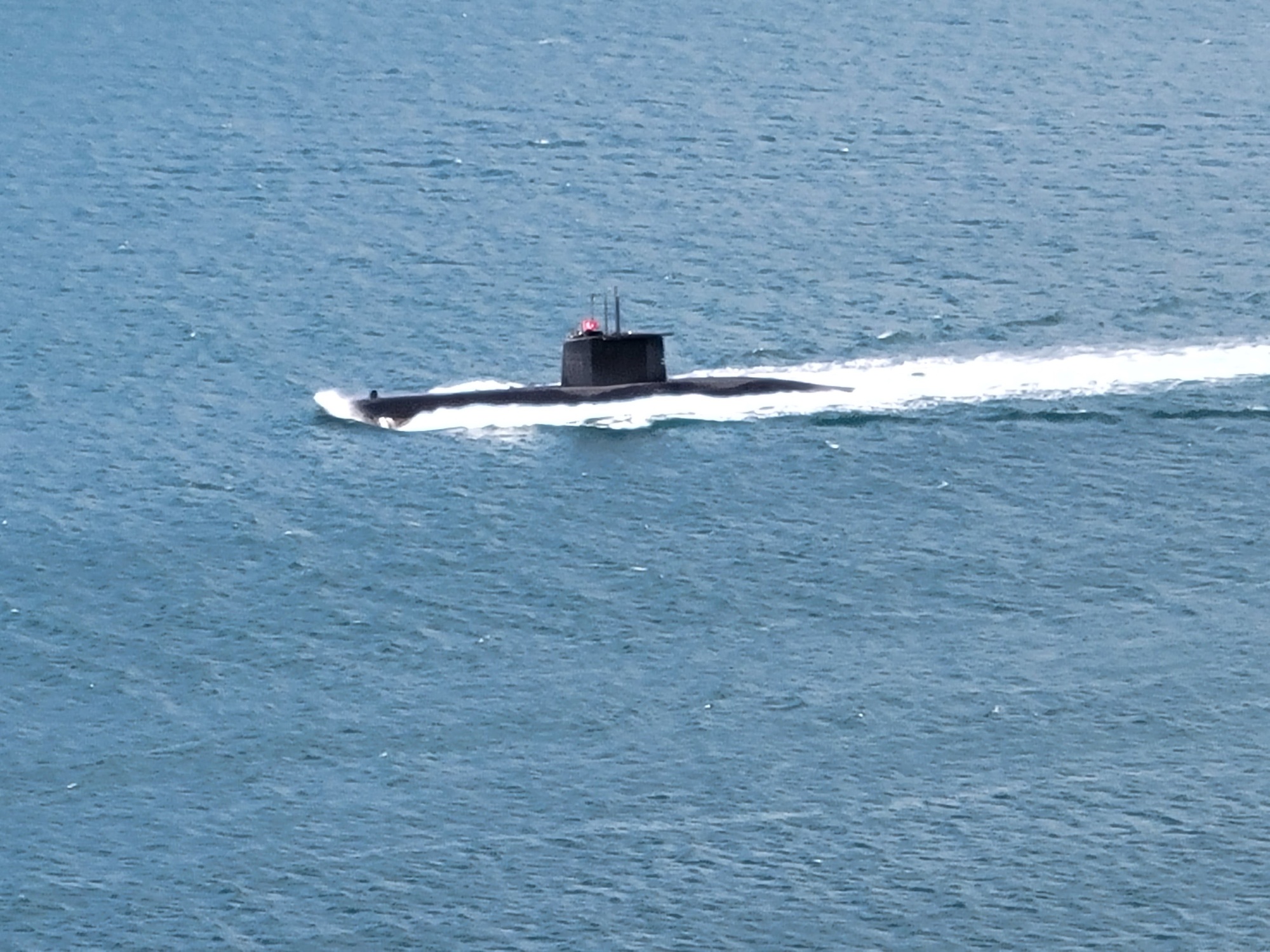
Other interesting things of note in our world:
- While one might think amar suyu (literally translation: laundry juice) is turkish for laundry detergent, we are here to tell you that would be an unfortunate assumptionfor as we learned the hard way, amar suyu is bleach.
- Baklava holds a secret ingredient that is not unlike crack-cocaine in its addictive propertiesI will need an intensive detox period
- Tyler has fully brought-into the romance of Turkish tea culture. Quote from him just this morning, The Turks really do tea rightwith the tulip cup and the little spoon, and the sugar cubeI didnt realize everywhere else in the world does tea wrong until we learned about tea from the Turks.
- Friday we head to Slovakia to witness Dylan and Lenkas civil wedding (the for-realsies wedding will be in September with friends and familyalso in Bratislava). Im so excited to attend and observe these two astounding humans join their lives together!
- We get to enjoy May in Budapest as we dogsit with two little puppers in the city-center.
- In 1930, the name of Constantinople was officially changed to Istanbul by Ataturk’s government, which requested all countries to use Turkish names for their cities. The city’s renaming was part of a broader effort to modernize Turkey and distance the country from its Ottoman past. Istanbul is the translation of the medieval Greek phrase to the city, which is what Constantinople was referred to for over 1000 years by the locals of the region (as it was the only major city in the vicinity).
